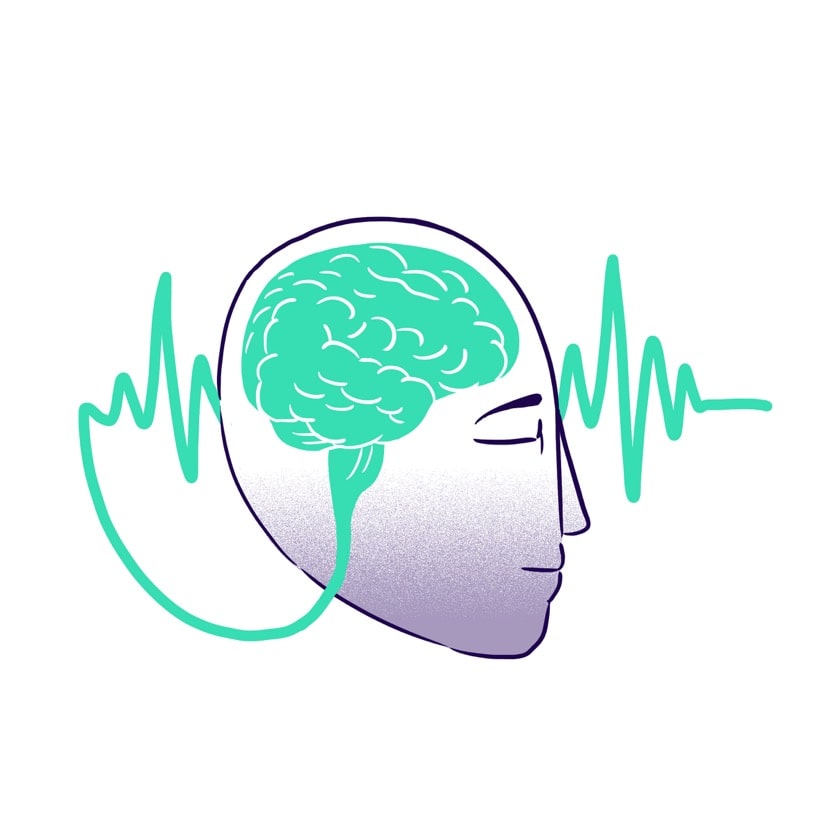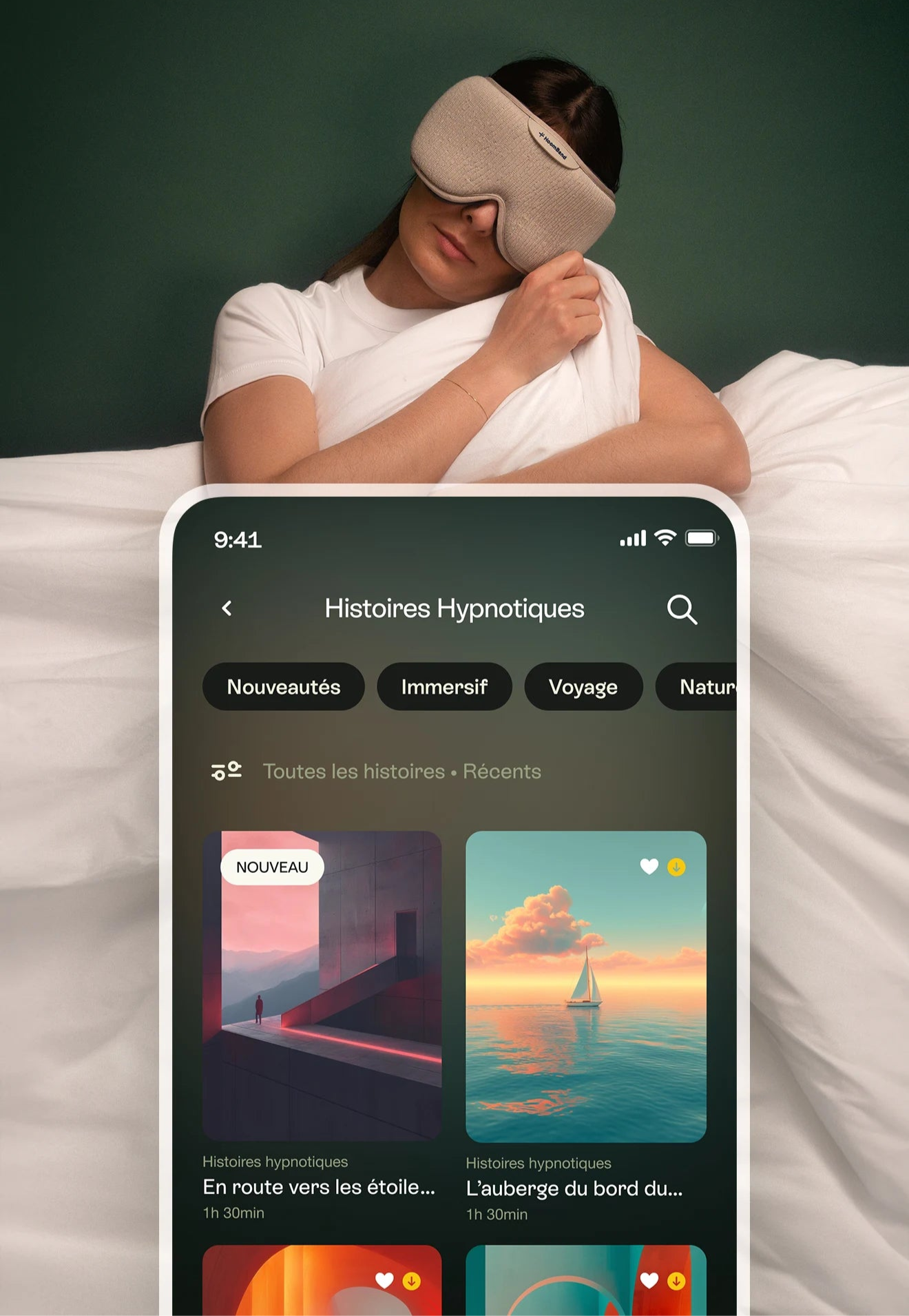Third part: dream and consciousness
What is the difference between dreaming and being awake? Can I become aware of being in a dream? And when that happens, who becomes aware and who dreams? If there is no consciousness during dreamless sleep, how can I know that I was sleeping?
These are just a few of the questions that occupied the minds of ancient Indian philosophers at bedtime. For centuries, they have been examined through increasingly refined meditation practices, incorporated into schools of yoga and Buddhism.
And I who thought that meditation was for relaxing, focusing, and being more productive at work! Well, forget the cherished nights of absence in the arms of Morpheus, for meditative exploration never stops, even during sleep. In truth, sleep is considered an optimal workspace for apprehending the subjective nature of perception, increasing the malleability of mental habits, and exploring subtle aspects of consciousness.
Unsurprisingly, these questions have also interested Western philosophers, and I know a few neuroscientists who would give a finger or even two to be able to answer them with biological models. However, Western science is just beginning to scratch the surface of what dreams and sleep might reveal to those studying the self, consciousness, and cognition. This may be due to the widespread belief that one is unconscious when sleeping, that dreams are hallucinatory states induced by the brain, and that, in any case, it is difficult to collect reliable data in this field because they would be completely subjective, and therefore not empirically valid.
In this context, the phenomenon of lucid dreaming represents an emblematic case of how different investigative traditions have placed more or less importance on processes related to sleep.
Lucid dreaming in Western science
Lucid dreaming is defined as such when the dreamer becomes aware of being in a dream. It can be associated with varying degrees of control over the dream content.
Although they are generally considered quite unique events, lucid dreams are actually very widespread within the population. A recent meta-analysis showed that 55% of people reported at least one case of lucid dreaming in their lifetime, and that 23% have lucid dreams at least once a month. If these figures are to be believed, the percentage of "frequent lucid dreamers" is actually twice as high as that of "self-handlers"!
Lucid dreams have been mentioned by Western philosophers and writers (such as Aristotle or Proust) for centuries, but they have only been the subject of scientific research since the late 20th century. Even Freud (who was probably not a lucid dreamer), in his foundational work The Interpretation of Dreams, only mentions lucid dreams a few times, dismissing them as an ego strategy to escape uncomfortable dream content.
Research on lucid dreaming has made a leap forward thanks to the work of Stephen LaBerge. He provided empirical evidence of this phenomenon by recording actual eye movements in participants whom he asked to move their eyes from side to side during a lucid dream. LaBerge and others have also developed techniques to induce and maintain lucidity in a dream, based on the idea that lucid dreaming is a skill that can be developed. Different training strategies have been studied, from the habit of performing "reality checks" during a dream and recording dream signs in a journal, to triggering an alarm during the night to read about lucid dreaming before going back to sleep. Although these methods are not all reliable, their common point is to develop intention and motivation throughout the day to become aware of being in a dream while sleeping.
Research on lucid dreaming conducted by Western science has revealed a fundamental truth: we are not completely unconscious when we sleep. But, aside from this established fact, the field of investigation is still in its infancy regarding deeper questions about states of consciousness and the mental processes underlying perception. This is where it becomes interesting to engage in dialogue with contemplative traditions that have regarded sleep and dreams as a playground and a companion for centuries.

Lucid dreaming and meditation
Let’s start with empirical elements: according to a recent study, long-term meditators have lucid dreams more often (1.1 times per month on average) than people with no meditation experience (0.45 times per month). This result is interpreted as reflecting the increased meta-awareness resulting from continuous meditation practice. Meta-awareness is defined as the ability to be aware of one’s own thoughts, feelings, and perceptions, and is a necessary condition for becoming aware of being in a dream.
In contemplative practices, cultivating present-moment attention, open and sustained throughout daily life, is not only a goal but also a tool for exploring habitual patterns of the mind as well as the underlying processes of subjective experience. It is therefore not surprising that specific practices, particularly in yoga traditions and Tibetan Buddhism, have been developed to maintain awareness and enhance its sharpness during dreams and, ultimately, during dreamless sleep. These practices are part of what is called "Yoga nidra", or "Dream Yoga".
For a complete description of Yoga nidra, including its origins and detailed instructions, I suggest reading the work of Buddhist scholar Alan Wallace who has translated and commented on traditional manuals and texts on the subject. I will provide a brief description here that may help to understand the personal and scientific interest in examining these practices more closely.
Yoga nidra, beyond lucid dreaming
Like the work of Western researchers, Dream Yoga implements methods to induce and maintain lucidity during dreams. Aside from techniques that may prove unappealing to a Western audience (such as complex visualizations and body postures), a common strategy is to develop an intention and motivation to become aware during a dream. However, unlike the scientific view that clearly differentiates the dream state from that of wakefulness, Dream Yoga is based on the idea that full awareness of the dreamlike characteristics of ordinary, waking perception facilitates the experience of lucid dreaming.
This is followed by training that involves actively manipulating the dream content, playfully, to reveal that it is ultimately a process of imagination that is not independent of one’s own mind. Finally, practitioners seek to "pierce" the dream content and reveal the subtle state of consciousness that underlies not only dreams but also all perceptual phenomena. Going beyond the dream and being able to maintain one’s awareness during deep, dreamless sleep is the ultimate goal of Dream Yoga. A significant step forward compared to the work of LaBerge and others!
Yoga nidra helps practitioners on the path to "enlightenment" in at least two ways. First, by experiencing how to "wake up" during a dream and manipulate the content, the practitioner realizes the continuity of consciousness from waking to sleeping, and the fact that the two worlds of dreaming and waking are not independent of the mind. Secondly, the type of consciousness that one can access during dreamless sleep is said to also manifest during the transition from life to death. Familiarizing oneself with this experience is of great importance within Eastern contemplative traditions.
Interesting. Why should I care?
Beyond spiritual goals, which may appeal to some but not all, the dialogue between practices and theories related to sleep from contemplative traditions and Western scientific approaches has, and can have, multiple benefits.
The degree of control that one develops over the content of dreams (as well as the understanding of its inseparable nature from the mind) is said to transfer into waking life, thus allowing for more flexibility and lightness in how one reacts to negative thoughts and emotions. This proposition certainly deserves the attention of empirical research.
Moreover, the fact that dream content can be reliably manipulated through training in specific practices challenges the psychological and neuroscientific conception that dreams are caused by brain activity, and not the other way around!
Finally, integrating narratives from Dream Yoga practitioners with empirical data, theories from experimental psychology, as well as neuroscience, can significantly broaden the understanding of processes and states of consciousness related to the self, as well as their biological correlates. An effort in this direction has recently been pursued by the excellent work of philosopher Evan Thompson in his book Waking, Dreaming, Being, which I highly recommend.
We have seen how research on sleep and dreams has followed different trajectories in Western science and Eastern contemplative traditions. Different approaches have led to different conceptions and different theories. A dialogue between all these research traditions can lead to more elaborate and refined philosophical, psychological, and biological models of consciousness, self, and perception.
Once again, we have seen that there is more to meditation practices than what is popularized in Western cultures, and that taking into account the full range of available theories and practices can lead to unexpected outcomes in terms of well-being and personal development.
Sources:
Baird, B., Riedner, B. A., Boly, M., Davidson, R. J., & Tononi, G. (2019). Increased lucid dream frequency in long-term meditators but not following MBSR training., "Psychology of Consciousness" (Washington, D.C.), 6(1), 40–54. Saunders, D. T., Roe, C. A., Smith, G., & Clegg, H. (2016). Lucid dreaming incidence: A quality effects meta-analysis of 50 years of research., "Consciousness and Cognition", 43, 197–215. Thompson, E. (2015). "Waking, dreaming, being: Self and consciousness in neuroscience, meditation, and philosophy". Columbia University Press. Wallace, B. A., & Hodel, B. (2012). "Dreaming Yourself Awake: Lucid Dreaming and Tibetan Dream Yoga for Insight and Transformation". Shambhala Publications.


